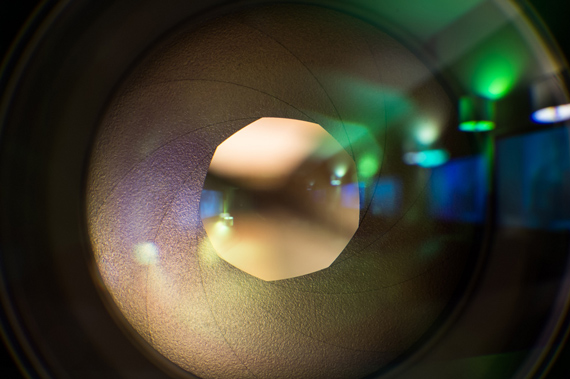The first step in understanding camera aperture is to get a clear picture in your mind as to what it actually is. Think of a human eye. Your camera’s aperture can be likened to the pupil, which opens and closes to allow differential amounts of light through the eye to the light sensitive retina behind it.
Put quite simply, your camera aperture is the opening in your camera’s lens that allows differential amounts of light through the lens to the camera’s light sensitive sensor behind it. Together with the ISO value and shutter speed of your camera, it controls the light exposure used to create your photograph.

photo by Dwayne Bent
The size of your camera aperture is controlled by settings called f/stops. The smaller the f/stop value, the larger the camera aperture (pupil) and the more light that passes through the lens to the camera’s sensor. The larger the f/stop value, the smaller the aperture and the less light passes through.
Digital cameras allow you to choose from an f/stop range dependent on your camera lens’s capabilities. For example purposes, let’s say from f/1.4 to f/22. Imagine that you’re sitting in a dark room: the pupil in your eye (camera aperture) will be fully open to allow enough light through to your eye’s retina to enable you to see more clearly. This would be f/1.4 on our example scale. If you then walk out of the dark room into bright sunlight, the pupil in your eye would close considerably to prevent you from becoming blinded by the sun. In our example scale, this would mean the aperture would close to f/22.

photo by Esmer Olvera
This example uses extremes at both ends of the f/stop scale, but of course there are steps in between. If you change your aperture setting on your camera from f/1.4 to f/2, the aperture is smaller than it was at the f/1.4 setting. It lets half as much light pass through the lens to the camera’s sensor than it did at the f/1.4 setting. This remains true each time you move to the next highest f/stop value.
If, however, you change your aperture in the other direction from f/2.8 to f/2, then the reverse is true, and the aperture is now larger than it was at the f/2.8 setting, and twice as much light passes through to your camera’s sensor. This again remains true each time you move to the next lowest f/stop value.
Changing your f/stop value has two different effects on the end result of the photo you take. It determines both how much of the photo will be in focus (the depth of field) and—working in conjunction with your ISO and shutter speed values—determines how bright or dark your photo will come out.
Depth of Field
The term depth of field refers to how much of an image is actually in focus. When you look through your camera and focus on a subject, there will be some amount of material both in front of and behind the subject that is also sharp and in focus. After that, focus will drop off and anything that is farther away from your focal point will appear soft or out of focus. As a general rule, approximately one third of the range of material in focus falls in front of the focal point and two thirds of the range of material in focus falls behind the focal point.

photo by Bryon Lippincott, f/2.8
Photo Brightness
Photo brightness is affected not only by camera aperture settings, but also by ISO values and shutter speeds. This is how your camera aperture affects the brightness of your photo. The larger the f/stop number, the smaller the aperture size. Therefore, less light is allowed through your lens, and your photo will be darker. The smaller the f/stop number, the larger the aperture size. More light is let through the lens, therefore your photograph is brighter.

photo by Nikos Koutoulas, f/22, shutter speed 102 sec., ISO 100
I hope that you found this article useful.
About the Author:
This articles was written by Peter Cannon from howtotakegoodphotos.com with further advice on how ISO and shutter speed settings affect your photography.
Like This Article?
Don't Miss The Next One!
Join over 100,000 photographers of all experience levels who receive our free photography tips and articles to stay current:






Leave a Reply